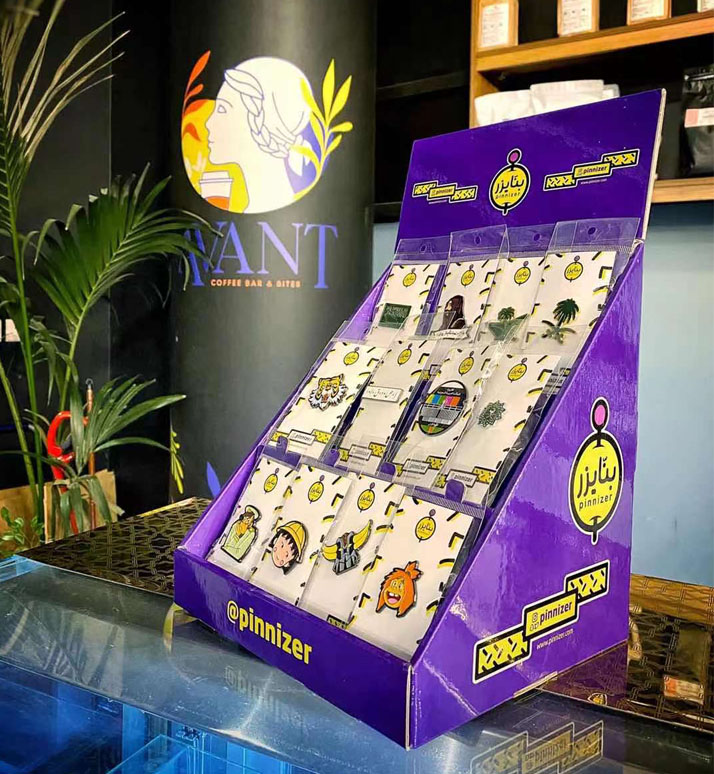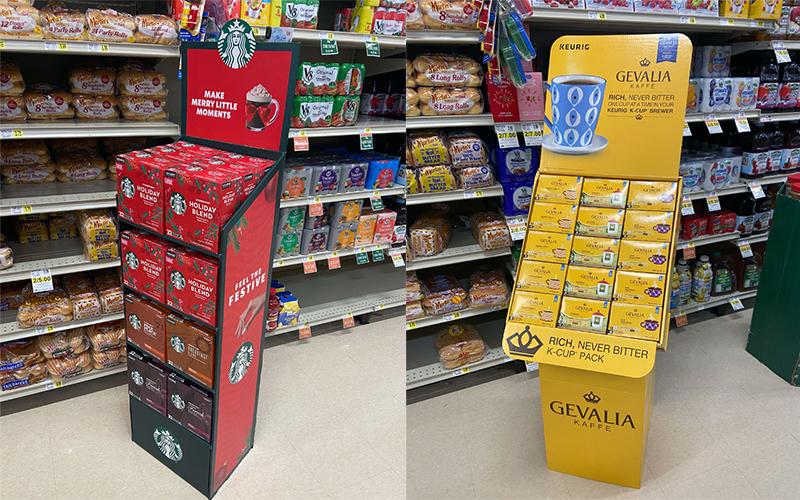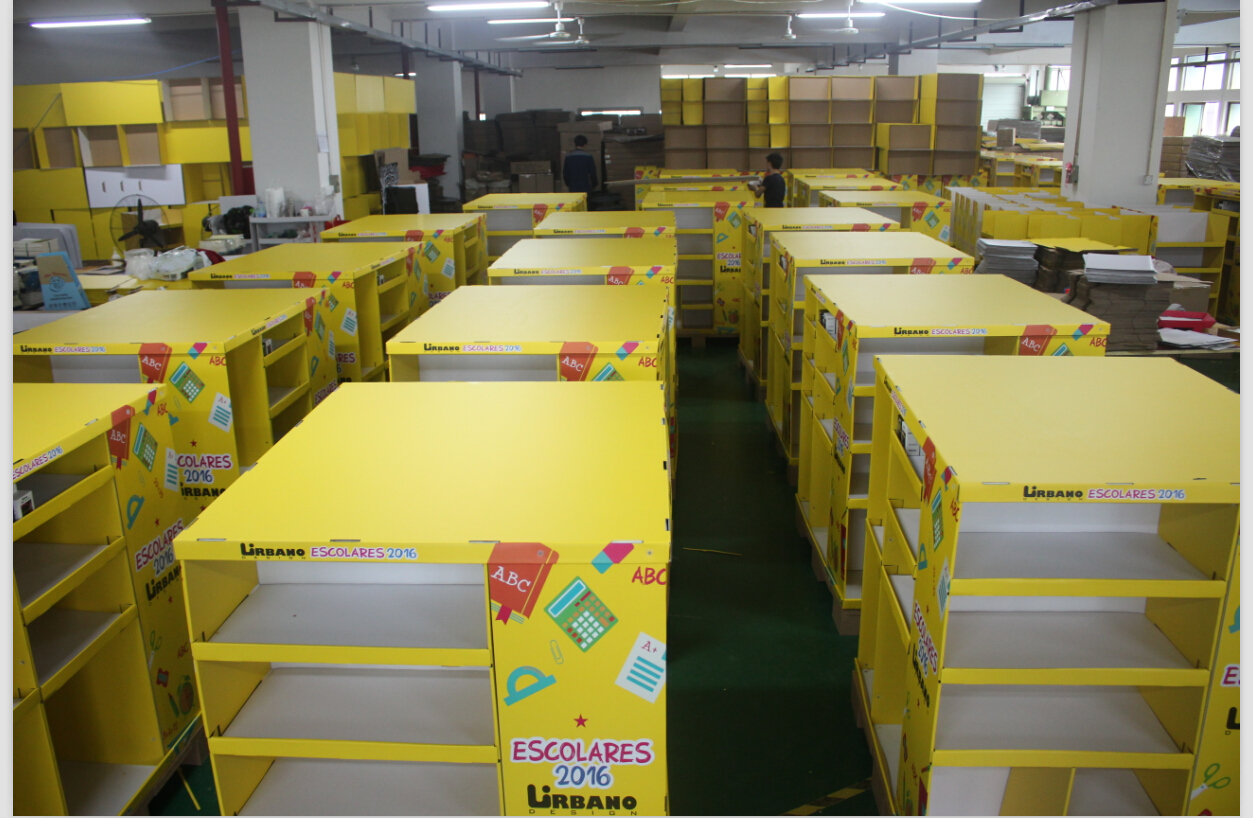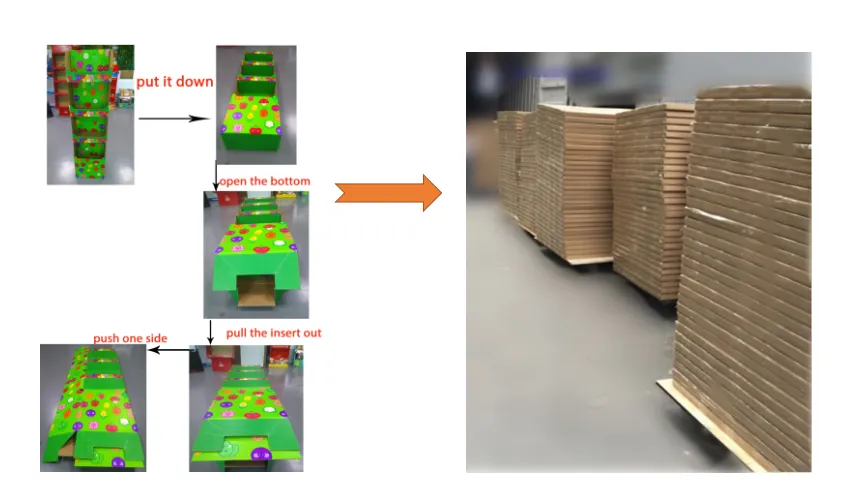Choosing the right retail display is confusing. The wrong choice wastes money and can hurt your brand's image. Let's look at the options to find your perfect fit.
The best retail display depends on your campaign goals and budget. For short-term promotions, temporary cardboard displays are cost-effective and impactful. For a long-term brand presence, use durable permanent displays. Semi-permanent displays offer a great balance for seasonal campaigns, lasting several months.
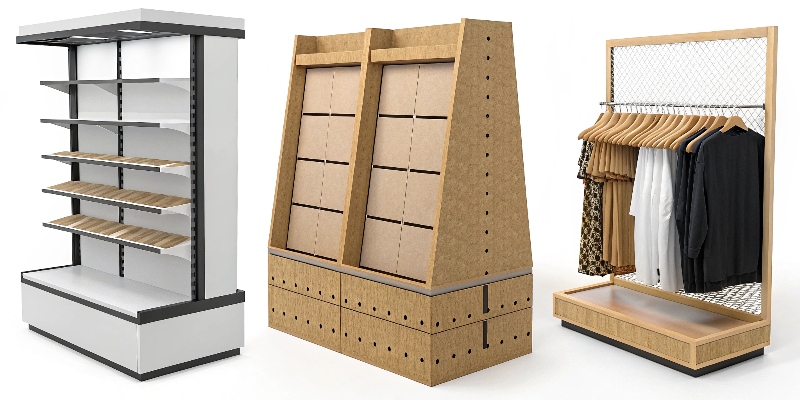
This is one of the most important decisions a brand manager or product designer makes. A great product can fail if it's not presented correctly in the store. As someone who has been in the cardboard display and packaging industry for 16 years, I've seen firsthand how the right choice can make or break a retail campaign. It's not just about holding products; it's about making a sale. Let's dig deeper into the types, methods, and examples to help you make a smart investment for your brand.
What are the different types of retail display1 fixtures?
There are so many display options available. It is easy to feel overwhelmed and not know where to start. Let's clearly define the main types of fixtures for you.
Retail display fixtures include general store shelving like gondolas, and specific promotional units called Point-of-Purchase (POP) displays2. These POP displays can be cardboard floor stands, counter units, dump bins, or pallet displays. Each type serves a specific purpose, from organizing stock to driving impulse buys.
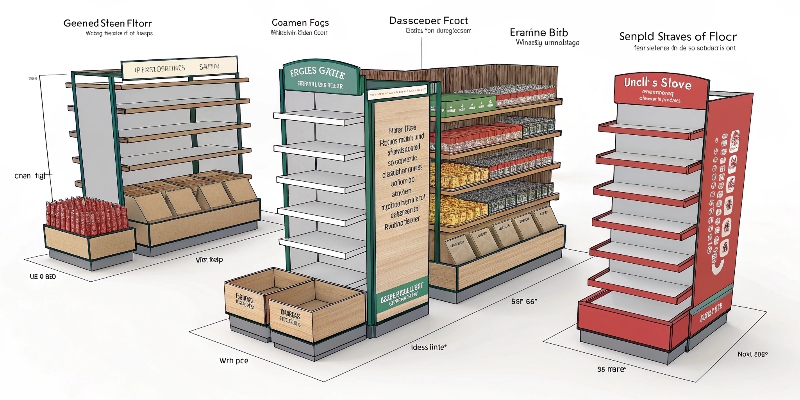
In my experience, the fixtures you choose say a lot about your strategy. Are you trying to become a permanent part of the store's layout, or are you running a quick, high-impact promotion? Understanding the tools at your disposal is the first step. For designers like Peter, knowing the functional differences between these types is critical for creating a design that not only looks good but also works perfectly in the intended retail environment.
Store-Wide vs. Promotional Fixtures
First, you have the store's own fixtures. These are things like gondola shelving3 and wall units. They are the backbone of the store's layout. Your product might live here permanently. Then you have promotional fixtures4, which is where my company, Lddisplay, spends most of its time. These are often called Point-of-Purchase (POP) or Point-of-Sale (POS) displays. Their job is to interrupt the shopper's journey and call attention to a specific product or offer.
Common Promotional Display Types
These displays are designed for specific campaigns and placements. They need to be cost-effective, easy to set up, and visually appealing to succeed. Here are a few common types we design and produce every day.
| Display Type | Best For | Typical Material | Lifespan |
|---|---|---|---|
| Floor Display (FSDU)5 | New product launches, featured items | Corrugated Cardboard | 3-6 weeks |
| Counter Display (PDQ)6 | Small impulse-buy items, samples | Cardboard, Paperboard | 3-6 weeks |
| Pallet Display7 | High-volume sales, club stores | Corrugated Cardboard | 4-8 weeks |
| Dump Bin8 | Oddly shaped items, sale products | Corrugated Cardboard | 4-8 weeks |
What is the display method used for retail luxury products9?
Luxury brands require a very special display approach. A cheap-looking display can completely ruin a high-end product's image and perceived value. Let's uncover the secrets to displaying luxury items.
Luxury products use display methods that create an atmosphere of exclusivity and premium quality. This usually means permanent or high-end semi-permanent fixtures made from materials like acrylic, wood, metal, and glass. The focus is on minimalism10, excellent lighting, and storytelling to build a premium experience.
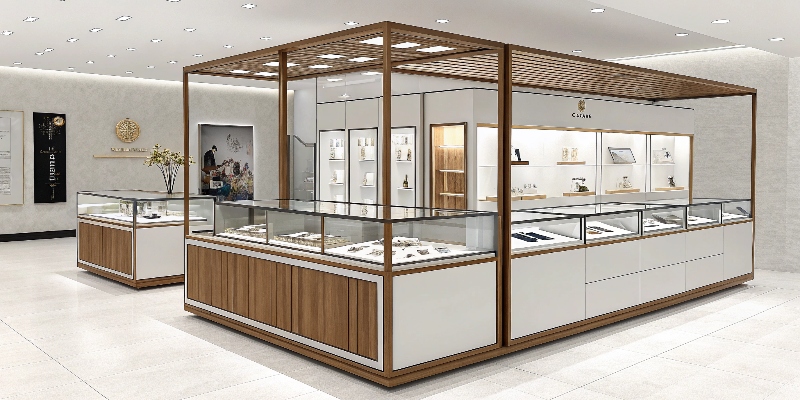
When you are selling a premium product, you are selling more than just the item itself. You are selling an idea, a feeling, and a status. The display is the stage for that story. I've worked with brands that want the cost-effectiveness of cardboard but the look of a luxury material. Through high-quality printing, laminates, and smart structural design, we can create temporary displays that look surprisingly premium, perfect for a luxury brand's seasonal promotion.
Creating a Premium Atmosphere
The key to luxury displays is "less is more." You won't see crowded shelves or loud "SALE!" signs. Instead, the focus is on creating space around the product to signal its importance. Good lighting is not just for visibility; it is used to create mood, highlight textures, and make materials like metal and gems sparkle. The entire setup should feel more like a gallery than a standard retail shelf. Every detail must be perfect because the customer will notice.
Material Selection Communicates Value
The materials you choose speak for your brand before the customer even touches the product. Heavy, real materials feel valuable.
| Material | Vibe / Feeling | Average Cost | Best For |
|---|---|---|---|
| Acrylic | Modern, clean, sleek | Medium-High | Cosmetics, electronics |
| Wood | Classic, warm, natural | High | Watches, spirits, artisanal goods |
| Metal | Industrial, strong, cool | High | High-end electronics, jewelry |
| Premium Cardboard | Eco-friendly, versatile, modern | Low-Medium | Seasonal gift sets, limited editions |
Which example describes a good retail display1?
What really makes a retail display1 great? Unfortunately, many displays just sit there, taking up space and failing to attract customers. Let's look at a concrete example of success.
A good retail display1 stops a shopper, clearly communicates the product's value proposition, and makes it easy to purchase. A fantastic example is a creatively shaped cardboard floor display for a new brand of chips, placed on an aisle endcap to maximize visibility and drive trial.
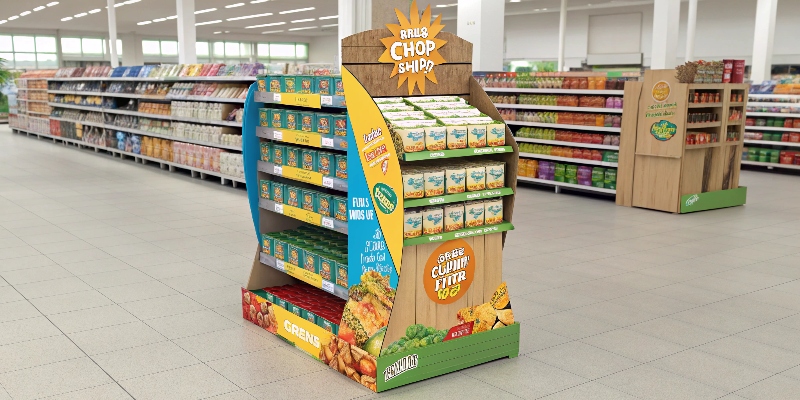
A display has a job to do: sell the product. If it fails at that, it doesn't matter how beautiful it is. I remember a client who launched a new line of organic sodas. They were struggling to get noticed next to the big, established brands. We worked together to design a floor display that looked like a rustic, old-fashioned farmer's market cart. It was just cardboard, but the shape and graphics told a story. It worked beautifully.
The AIDA Principle11 in Action
A good display perfectly follows the AIDA model: Attention, Interest, Desire, and Action.
- Attention: The unique "market cart" shape and vibrant colors made shoppers stop and look. It stood out from the regular shelving.
- Interest: A bold header card told the story: "Farm-Fresh Flavors, Purely Organic." This got people curious about the product.
- Desire: The sodas were displayed beautifully, with the colorful liquids creating an appealing image. People could imagine how refreshing they would taste.
- Action: The display was designed so the bottles were easy to grab. There was a clear price, making the purchase decision simple.
Checklist for a Good Display
I always advise clients to think through a simple checklist. For designers like Peter, this framework helps ensure that creativity is also effective.
| Element | Why It Matters | How to Achieve It |
|---|---|---|
| Strong Visuals & Branding | Grabs attention from a distance. | Use bold colors, a unique shape, and a large, clear logo. |
| Clear Message | Shoppers understand the offer in 3 seconds. | Use a simple headline on a header card. (e.g., "New Flavor!") |
| Structurally Sound | Must survive the store environment. | Use the right material thickness and internal supports. Test it! |
| Easy to Shop | If it's hard to get the product, they won't. | Ensure products are easy to reach and remove from the display. |
| Right Location | Placement is everything. | Fight for high-traffic spots12 like endcaps or near checkout. |
What are the different display formats in retail?
You may know the general types, but what about the formats? Using the wrong format for your product or location can make your display invisible to shoppers and completely ineffective.
Retail display formats refer to the shape and strategic function of the unit. Common formats include large-scale pallet displays and endcaps for high-volume sales, and smaller formats like counter-top units (PDQs) and power wings (sidekicks) for driving last-minute impulse buys.
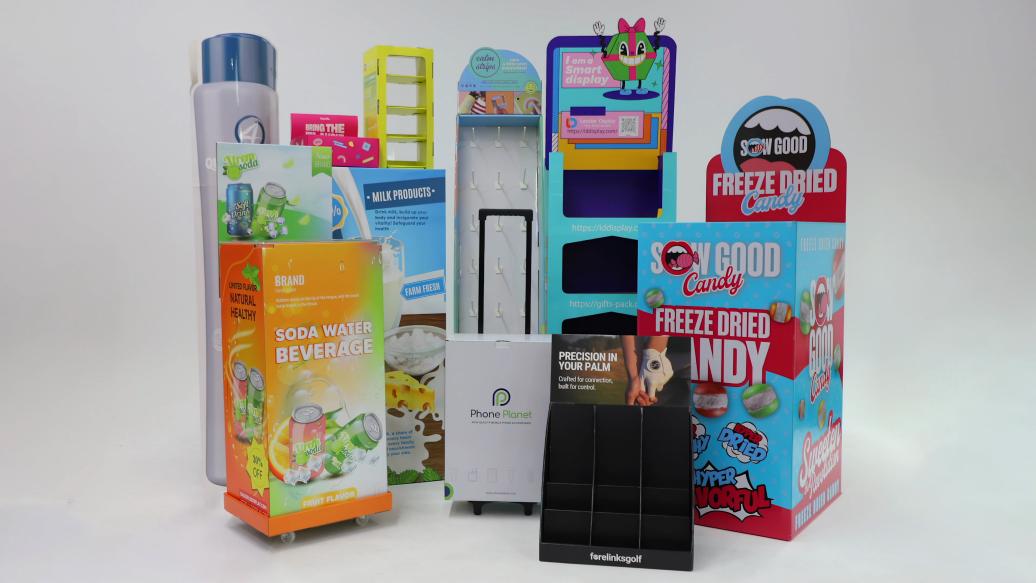
After 16 years in this business, I can tell you that a brilliant design in the wrong format is a waste of money. A huge pallet display might be perfect for a warehouse club like Costco, but it would be rejected by a small convenience store. A tiny counter unit will get lost in a massive superstore. A designer must consider the retail environment just as much as the brand identity. The goal is to match the format to the location and the sales goal.
High-Traffic, High-Volume Formats
These are the heavy hitters of retail display1s. They are designed to be placed in the busiest parts of the store to move a lot of products quickly.
- Endcaps: These are displays at the end of an aisle. They are prime real estate because every shopper who walks down that aisle sees them. They are perfect for promotions and new products.
- Pallet Display7s: These are large displays that are often shipped pre-loaded with products. Retailers love them because they are easy to set up—they just place the whole pallet in a main aisle. They scream "Value!" and are great for seasonal items or big promotions.
Impulse-Buy and Add-On Formats
These smaller formats are all about triggering a last-minute purchase. Their placement is strategic and precise.
| Format | Retail Location | Primary Goal | Common Products |
|---|---|---|---|
| Counter Display (PDQ)6 | Checkout counter, service desks | Drive impulse buys | Candy, batteries, lip balm, gift cards |
| Power Wing (Sidekick) | Side of an endcap or aisle | Drive add-on sales | Product accessories, related items, trial sizes |
| Shelf Talker | On the edge of a regular shelf | Grab attention in a crowded aisle | Highlight a feature, promotion, or new item |
Conclusion
Choosing the right display type and format is not just a design choice; it's a strategic business decision13. Match your display to your campaign, brand, and retail environment for success.
-
Explore expert insights on designing retail displays that attract customers and boost sales. ↩ ↩ ↩ ↩ ↩
-
Understand how POP displays can drive impulse buys and enhance product visibility. ↩
-
Explore the role of gondola shelving in organizing stock and maximizing retail space. ↩
-
Learn how promotional fixtures can effectively highlight products and offers. ↩
-
Discover how FSDUs can effectively launch new products and attract attention. ↩
-
Find out how PDQs can drive impulse purchases at checkout counters. ↩ ↩
-
Learn how pallet displays can facilitate high-volume sales and easy setup. ↩ ↩
-
Explore how Dump Bins can effectively showcase oddly shaped or sale products. ↩
-
Understand the unique display strategies that enhance the perceived value of luxury items. ↩
-
Discover how a minimalist approach can create an exclusive atmosphere for luxury brands. ↩
-
Explore how the AIDA model can guide effective retail display design. ↩
-
Discover how strategic placement in high-traffic areas can boost product visibility. ↩
-
Explore how display choices can impact overall retail success and brand strategy. ↩



